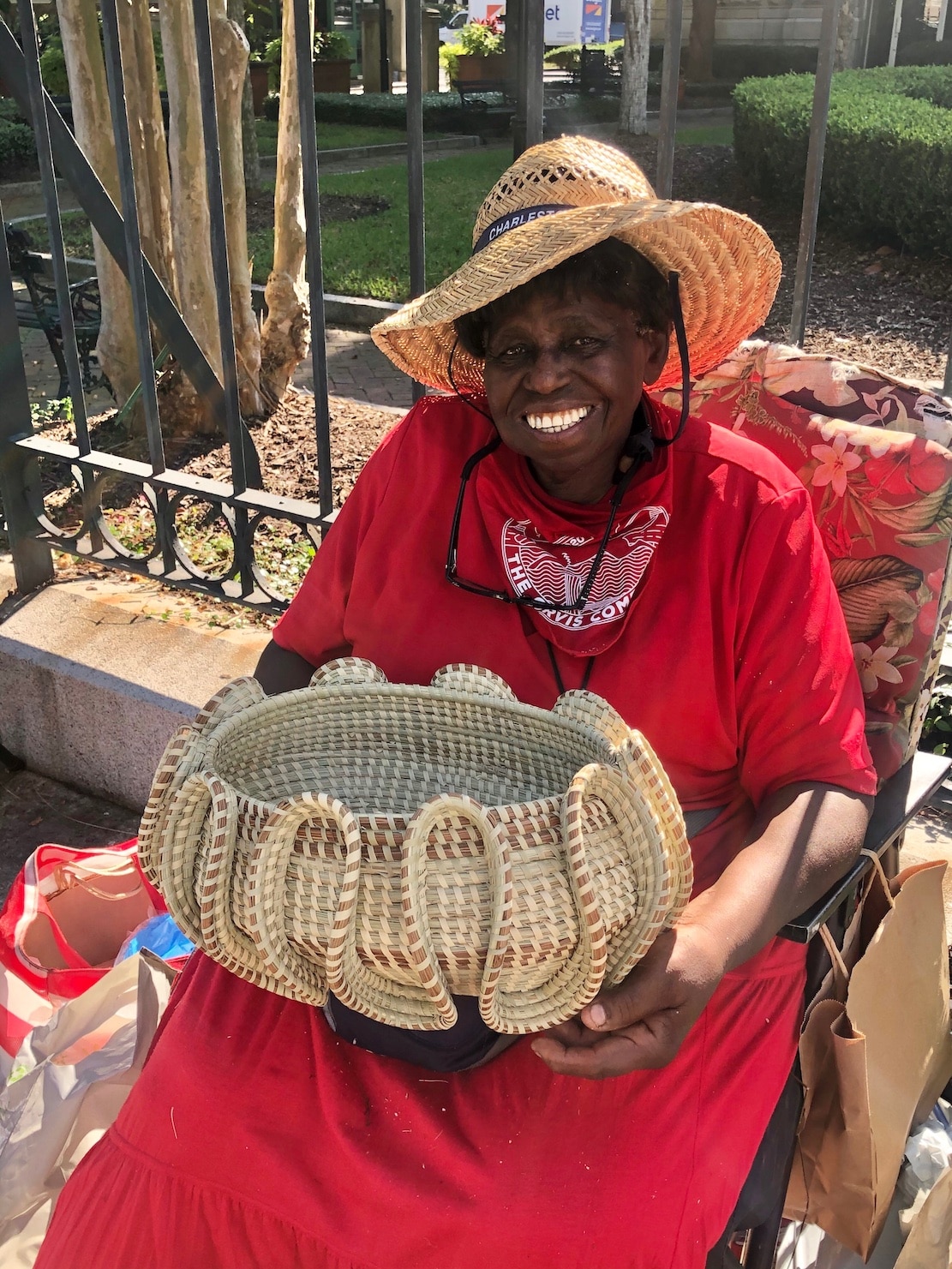
Sweetgrass Baskets: Full of Life and Love
Just down the street from The Jasper, at the historic U.S. Post Office and Courthouse at 83 Broad Street, you’ll meet sweetgrass basket artist Ruth Wright. She is a familiar face to those who adore the local sweetgrass markets and her handwoven baskets have been admired by locals and visitors for decades. Ruth inherited the artistry from her grandmother, Elizabeth Wilson, who showed her how to weave baskets when she was young, passing down the craft that her family has preserved through generations in Charleston. Ruth proudly carries on her grandmother’s old woven loop handle technique in some of her designs. Her creations include crosses, small bowls, drink coasters and bread baskets, which are her most popular goods. Five days a week, Ruth interacts with locals and tourists who stop and admire her variety of art at the popular intersection known as the Four Corners of Law.
Every day, locals and visitors browse the handmade sweetgrass baskets and souvenirs at the marketplace, admiring a handicraft that is honored throughout the South. Ruth knows all the artists that sell their art at Four Corners of Law, because they all come from Mount Pleasant. She says that each of them has a unique style of basket weaving, which sets them apart. One of Ruth’s creative touches includes adding miniature “love nuts,” which are woven to look like roses on the brim of her designs.
“Whatever come in your head, whatever come in your mind, you put them a basket, that’s where you get our designs from,” Ruth said. Ruth makes custom projects like Easter baskets and baby carriages for special requests, too.
Every day she’s at the market, Ruth is weaving peacefully in her chair across from the stand. She shares a big warm smile with people who cross her path and doesn’t shy away from a conversation with guests.
You can visit Ruth Wright’s sweetgrass stand and other sweetgrass markets around town to learn more about one of the country’s oldest African-inspired arts. Popular for home decorations, the craftsmanship is celebrated for its cultural significance. The use of sweetgrass in ceremonies and goods dates back to the 1600s, when sweetgrass baskets were woven by West African slaves using bulrush, a tall rushlike water plant. Basket weaving techniques were passed down through generations of Gullah Geechee families, who are descendants of the West African slaves and live in the Palmetto State. Today, Gullah Geechee sweetgrass artisans keep their families’ traditions alive by weaving and selling baskets at sweetgrass stands throughout the Charleston region.
Ruth values her families’ sweetgrass basket legacy and her joy in basket weaving has lasted decade. She has no plans to retire anytime soon! The next time you visit the market, say hello to Ruth and witness how talented makers like her preserve one of the most treasured handicrafts in South Carolina.